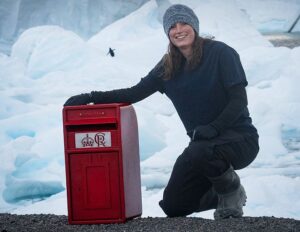Scientists from the British Antarctic Survey (BAS) have discovered four new colonies of emperor penguins in Antarctica. They spotted all four in satellite images.
The researchers were initially scanning satellite images for colonies that were changing positions. Penguin colonies move because of changing sea ice conditions. They need stable ice for breeding and caring for their chicks.
The penguins lay their eggs in May and June, incubating them for 65 days. The parents stay with their chicks for months. The young birds do not fledge until December or January.

Red boxes show the new emperor penguin colonies. Light blue boxes denote known colony sites. Image: Fretwell, 2024
While searching for the moving penguins, BAS scientists stumbled across four previously unknown breeding colonies. There are now 66 known colonies in Antarctica and an estimated 550,000 emperor penguins.
The return of a vanished colony
They were also thrilled to re-discover the Halley Bay colony. The colony vanished in 2016 when sea ice conditions changed rapidly. Thousands of young penguins perished when the ice broke apart beneath their feet. But it seems that the survivors have repositioned themselves in the MacDonald Ice Rumples, 30km east of their old site.

High-resolution satellite image of the emperor penguin colony at the Vanhoeffen site. MAXAR. Photo: BAS
Emperor penguins are incredibly difficult to monitor. Their remote and inhospitable location makes it almost impossible to track them, which is why researchers have turned to satellite images. The bird’s poo turns the snow brown, making it stand out in satellite images.
Researchers first spotted the new colonies in images from the European Commission’s Copernicus Sentinel-2 satellite. They confirmed their suspicions using high-resolution images from the Maxar WorldView-3 satellite. As the sea ice continues to change, the penguins will only get harder to monitor.
“It’s clear these birds are going to have to be adaptable, to move around to new sites as those ice conditions continue to change, and we’re seeing evidence of this,” Peter Fretwell of the BAS told BBC News.
Still vulnerable
Though the new colonies are good news, scientists remain concerned. The last few breeding seasons have been dismal.
In 2023, sea ice covered 2.2 million square kilometers less area than the average between 1981-2022. Studies in 2022 estimated that sea ice loss in the Bellingshausen Sea may have killed thousands of emperor penguin chicks. Researchers think changing sea ice has impacted around 30% of breeding colonies since 2018, and that number is increasing.

Sentinel-2 images of the four new sites at a consistent scale. Arrows show the locations of emperor penguin colonies. Photo: Fretwell, 2024






